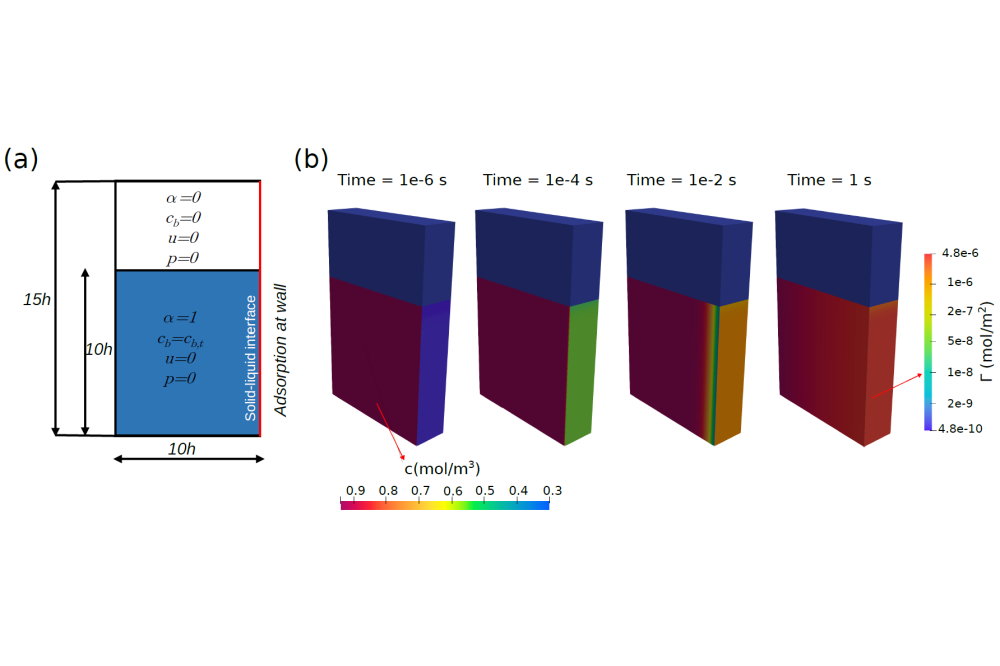Numerical Analysis of Surfactant Transport and Wetting Phenomena in Inkjet Printing
Introduction
Droplet impingement and spreading are of particular relevance for various technical applications, including inkjet printing. Typically, in inkjet printing, the diameter of impinging drops is a few microns. Further, the time scale for the intial impact and subsequent spreading are of a few milliseconds. This poses a limitation to experimental investigations of such processes. Therefore numerical simulations of droplet impingement, spreading and coalescence are conducted within the scope of this project. Numerical models are developed to investigate the interaction between species transport and wetting.
Methods
In the first period of the project, the already available two-phase flow solver is utilized. The two-phase flow is described using the algebraic volume of fluid method implemented in the open source CFD library OpenFOAM. Essentially, a scalar is used to define the evolution of the phases within the computational domain. In volume of fluid method, this scalar is the volume fraction of one of the two phases. Therefore, when the volume fraction is 1, the computational cell contains only the first phase. For a volume fraction of 0, the computational cell contains only the second phase. When the volume fraction changes from 1 to 0, the interface between the two phases will be present. The contact line dynamics are modeled using a sub-grid scale model, which is Kister contact angle model and the transport of a soluble surfactant is handled by a two-field formulation. Here, the bulk concentration and the interfacial concentration of the surfactant are solved using two different transport equations, which are coupled by a source term depending on the ad/desorption at a liquid-gas interface. Further, the adsroption at a solid-liquid interface is considered by enforcing a custom boundary condition at a wall, where the net diffusive fluxes will be equal to the rate of ad/desorption at the wall.
Results
First results from the project helped validate the numerical formulation for the sorption kinetics at a solid-liquid interface. For instance, for a two dimensional case with a wall on one side of the dromain and with adsroption properties of water/heptanol solution, the surface excess concentration at the solid-liquid interface is shown in Figure 1. The increase in mass of surfactant at the wall can be seen from the color coding of surface excess concentration. Also, as the surface excess concentration at the wall increases with time, the decrease in surfactant concentration in the bulk within the vicinity of the wall can be seen. It is observed that the sorption kinetics are at first adsroption limited and then in the later stages, diffusion limited. By considering two extreme cases of adsroption and diffusion limited adsorption, a good agreement between the developed numerical model and available analytical and numerical reference solution is observed. Followed by this, now, the impact dynamics of surfactant laden drops while considering the sorption processes at both liquid-gas and solid-liquid interfaces is being analyzed.
Discussion
The validation study conducted in the past project period proved the numerical method suitable to study sorption kinetics involved in surfactant transport. Furthermore, the extensions to the already available solver regarding species transport have successfully been tested in the High Performance Computing environment. While we focused mainly on the spreading of single droplets until now, we plan to extend our investigation to impinging drops on thin films or sessile drops. These highly dynamic processes require high temporal and spatial resolution and therefore make the use of a High Performance Computer indispensable.




